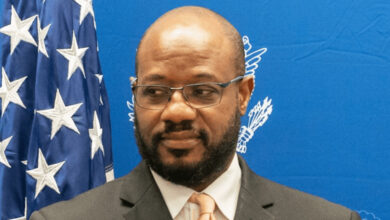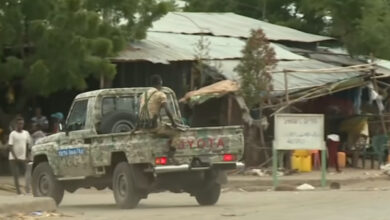It’s more than black and white
During the days America was fixated on the live television broadcast of the Zimmerman trial, over 50 Chicagoans died of shootings; nearly all were black and many of them teenagers. But where is the outrage? Asks our U.S. Correspondent Tomas Mega from Nevada
On February 26, 2012, in Sanford, Florida, Trayvon Martin, a 17 year old black American was shot dead by George Zimmerman. Zimmerman, the son of a white father and a Hispanic mother, was found innocent of second degree murder by a jury of six women on July 6th.
The verdict has provoked outrage across America. “Trayvon Martin could have been me 35 years ago,” said President Obama. Attorney General Eric Holder said the shooting was “unnecessary.” The fury over the verdict focuses on race relations in America. If it had been a black man who shot a white teenager in Sanford, Florida that day, many doubt the black man would have been found innocent.
Perhaps. In either situation, the state of Florida must convince a jury that to be guilty of second degree murder, three elements must be proved beyond a reasonable doubt: the victim is dead, the death was caused by the criminal act of the defendant, and there was an unlawful killing of the victim by an act imminently dangerous to another and demonstrating a depraved mind without regard for human life.
The prosecution could only prove to the jury that Trayvon Martin was dead. Zimmerman’s defense was simple and classic: he acted out of self defense as Trayvon Martin knocked him to the ground, straddled him and beat him. He believed his life was in imminent danger, and he defended himself. The jury of six women agreed.
The verdict has created a speculative, media fuelled brawl over ‘stand your ground’ laws in America. Speculative because Zimmerman’s attorneys, cleverly, never used ‘stand your ground’ as a defense. Classic self defense implies you are unable to retreat from an attack, and, according to Zimmerman’s attorneys, he could not retreat because he was knocked to the ground, straddled and being beaten by Martin. ‘Stand your ground’ allows you to meet deadly force with deadly force, even though retreating is an option. In Zimmerman’s case, ‘stand your ground’ never emerged as a defense strategy. It wasn’t necessary.
Despite this fact, ‘stand your ground’ laws have come under attack since Zimmerman’s verdict. Its proponents argue that it is absurd that you can defend yourself if attacked in your home, but your ability to do so is undermined if you are attacked on the street outside your home, while its critics say it’s a license to shoot first and ask questions later. Yet the concept of necessity is part of every state’s law as to when you can use deadly force to protect yourself. If the State can prove that there was no necessity for you to use deadly force, you are likely going to prison.
It is more than our colors
Black on white crime, white on black crime, Hispanic on white crime, all of it makes for sensational news because of the wretched state of race relations in America. Yet the horror of black on black crime in cities like Chicago goes largely unnoticed and garners far less publicity than the Trayvon Martin case.
During the days America was fixated on the live television broadcast of the Zimmerman trial, over 50 Chicagoans died of shootings; nearly all were black and many of them teenagers. Since February 2012, when the Trayvon Martin killing first captured the attention of America, more than 700 have died of shootings in Chicago. All of this in a state (Illinois) with some of the most restrictive gun laws in America.
Apparently none of the dozens of dead black teens killed during this time could have been President Obama 35 years ago. But Trayvon Martin could. I wonder how that makes the mothers of those dead Chicago teens feel. Attorney General Holder hasn’t said much about the Chicago carnage either. Black on black crime isn’t as gripping on Americans as mixed race crime.
Whether you are outraged or not by the George Zimmerman verdict, none of it is going to change the situation in Chicago and other U.S. cities. Whether you agree or disagree with ‘stand your ground’ laws, none of it is going to stop the slaughter that exists today in America’s third largest city, because it is not a contributing factor. More gun laws? We are incapable, or unwilling, to effectively enforce the already restrictive laws that exist.
Where is the outrage?
There are profound problems that affect Americans, and race relations is surely one of them. The outrage over the Zimmerman verdict confirmed that. But where is the outrage over disenfranchised youth, gang culture, fatherless teens, youth joblessness, youth hopelessness, drug abuses, education drop-out rates, and a willingness to use horrific violence against human beings, often teenagers? The Sentencing Project, a criminal justice think tank, estimates that “one-third of all black men are already convicted criminals by their 20’s.” It all says something about us as a society, and as a culture.
We don’t know if there will be another Trayvon Martin somewhere in America. If there is, the bitterness over what is perceived to be racial injustice will surface again and pleas for justice in America will echo from coast to coast. Political opportunists will lecture us, journalists will sensationalize the race factor, and the abject state of race relations in America will dominate the news once again.
In the meantime, the killings in Chicago continue. According to DNAInfo Chicago, which tracks Chicago’s murders, 61 blacks, including fourteen teenagers, have been shot dead in the last seven weeks only.
Where is the outrage?
Photo: Karencivil.com








